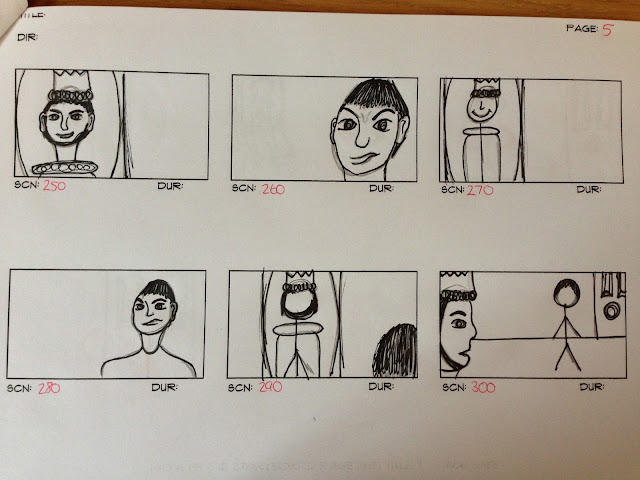The book the
Deathly Hallows was published in July 2007 and straight away the makers of the
films were unsure how they were going to get all of the important events in the
story into one film. Books are always more detailed than the films that follow
them, but in this case it seemed impossible to make a film that had all of the
necessary plot points without the film being six hours long. This is when the
suggestion of making the book into two films came about. They had wanted to do
this for the fourth book ‘Harry Potter and the Goblet of Fire’, but decided
they could focus on the main elements and get everything into one film. This
wasn’t the case for the seventh and final book. Producer David Heyman was
reluctant to split the book at first, but along with fellow producer David
Barron and director David Yates, decided that there was too much that would be
left out in one film and committed to the double bill. "In concluding the
film franchise, we recognized that Harry Potter and the Deathly Hallows
is packed with vital plot points that complete the story arcs of all of its
beloved characters. That said, we feel that the nest way to do the book and its
many fans, justice is to expand the screen adaptation of Harry Potter and
the Deathly Hallows and release the film in two parts." (Robinov).
After determining they would make two films, they decided to shoot the films together, rather than shoot the first part and then the second. This was because they needed to ensure they could get the whole cast for both films, although shooting two films at the same time would mean a massive constant shooting schedule, 478 days to be precise. David Heyman said that the Deathly Hallows films would be the most accurate to the book, purely because of the longer amount of time they had to tell the story.
Pre-production
began in January 2009. In contrast to the filming schedule, script writer Steve
Kloves wrote the script for Part 1 first, and then wrote the script for Part 2
in April 2009. During pre production David Yates decided he wanted to shoot a
lot of the film with a hand held camera, claiming "I want to shake things up
every time I go into this world. I like experimenting as we go along"(Yates). However the amount of hand held shots
were more in Part 1, and less so in Part 2 as Part 2 is more ‘operatic’ and
‘dramatic’. Below is a photo montage of conceptual art for the Deathly Hallows double
bill, produced by storyboard artist Adam Brockbank. Brockbank worked on all
storyboards and concept art for all of the films.
Before filming could take place however the producers needed to decide where the first film should end. They had many different ideas for when in the story the film should stop, they felt that even though the story wasn’t over, the film should still have some kind of ending, a resolve that would sit well with the audience. This is when they decided to end the first film with the burial of Dobby the house elf. However, in order for the audience to feel emotionally connected to Dobby prior to his death, the producers had to fudge the story slightly. In the films Dobby appears earlier in Part 1, which doesn’t happen in the book. Heyman felt that it was important to reintroduce Dobby to the characters before his death, as he had not been in the story for quite a while. It is an interesting point that not only will films take things out that are in the book, but they will add things in that aren’t in the book inorder to make the story work in a visual way.
Once the final story had been worked out, adult actors in the film, including Ralph Finnes began preparing for their parts and filming first, in October 2009. Location shots were also filmed early on in parts of London, Swinley Forest and Lavenham village. The rest of the production followed on from this at Leavesden Studios and secondary studio Pinewood. Leavesden Studios have been used for all of the first 6 films.
Alongside the production of the Deathly Hallows, filmmakers made a video called ‘The Golden Board’. This video featured the cast and crew members holding up a board which displayed how many days they were into production and how many days left until the end. As well as this, British filmmaker Morgan Matthews made a piece documenting the film making process and what the cast and crew had to do in their jobs. The video including behind the scenes footage of sets and the different departments working on the film.
References:
McCabe, Bob, (October 2011): Harry Potter: Page to Screen, The filmmaking journey.
Robinov, Jeff, (13 March 2008): Warner Bros. press release, Business Wire retrieved
from:
O'Hara, Helen (April 2009).
"Hallowed Ground". Empire: 100–104.
Yates, David (January 2010): The
Leaky Cauldron, retrieved online
from: http://www.the-leaky-cauldron.org/2010/1/24/david-yates-deathly-hallows-a-big-opera-a-great-big-epic-with-huge-battles.
Retrieved 20 May 2011
Keith, (August 2011): Article
from Mugglenet retrieved online from: http://www.mugglenet.com/app/news/show/4662
Matthews, Morgan: Deathly Hallows documentary
Heyman, David (2009/10): The Golden Board

























